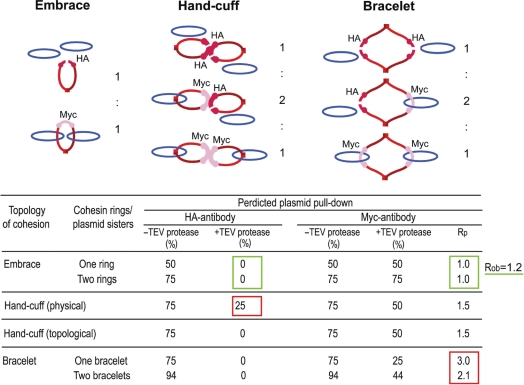Table 1.
Predictions by the three topological models on the nature of plasmid cohesion
 |
Schematic diagrams for plasmid cohesion established by the embrace, bracelet and hand-cuff models from an equal mixture of cohesin(Mcd1-HA6) (cleavable by TEV protease) and cohesin(Mcd1-Myc13) (resistant to TEV protease) are shown in Figure 3 (top). Treatment with TEV protease will cleave all cohesin(Mcd1-HA6) containing rings (see drawings above), opening gates for trapped plasmids to escape. Only those plasmid molecules surrounded by the closed cohesin(Mcd1-Myc13) ring(s) will be stopped. Rp is the predicted molar ratio of plasmid that can be pulled down by the Myc-antibody before and after TEV protease cleavage; Rob is the observed value. Agreement between experiment (Figure 3B and C) and prediction is indicated by the green rectangles; disagreement by red ones. The embrace model is the winner (with two green rectangles) over the hand-cuff and bracelet models (each with a red rectangle). These assays do not permit a clean distinction between the embrace and the topological hand-cuff models.
